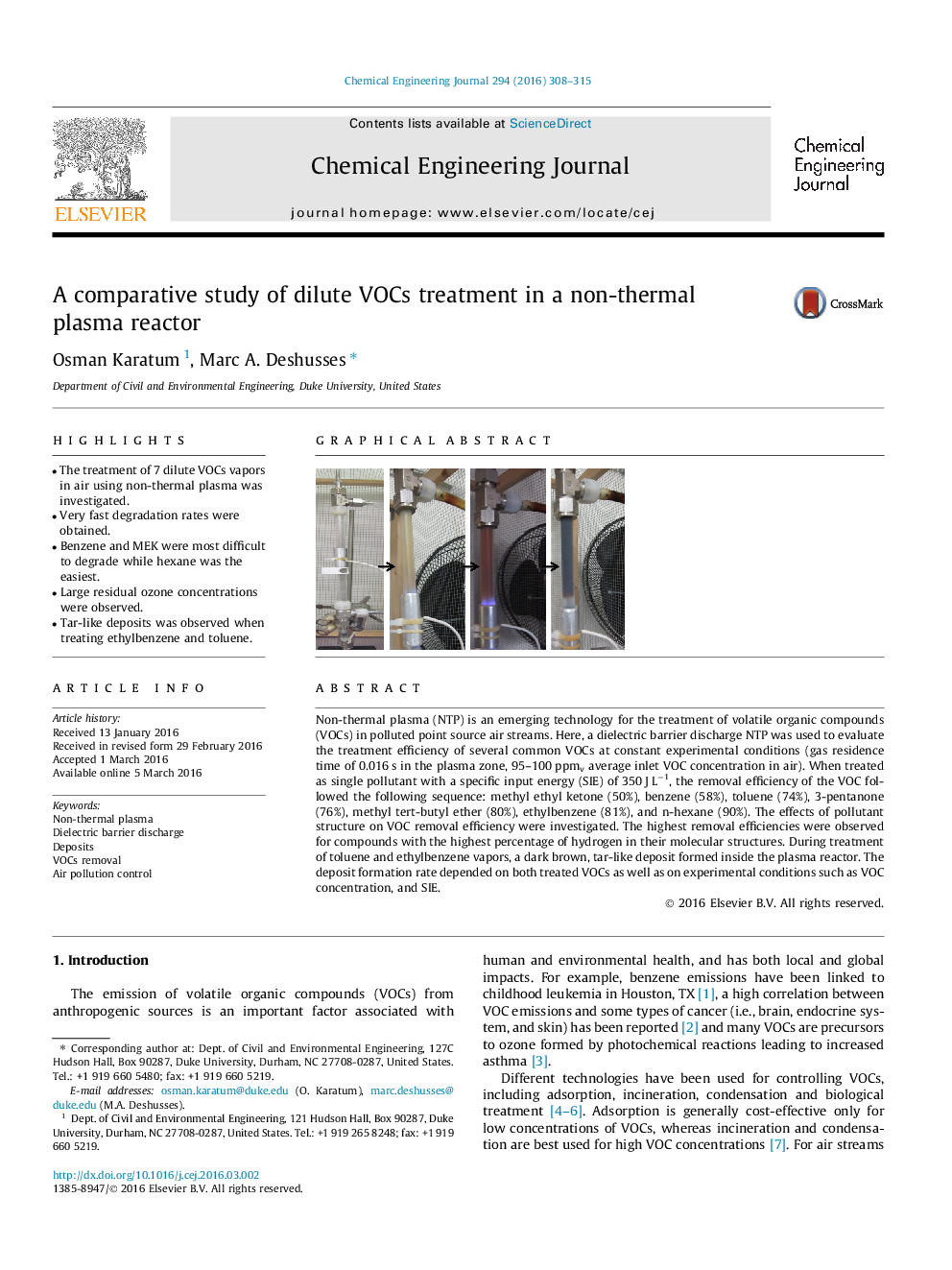| Article ID | Journal | Published Year | Pages | File Type |
|---|---|---|---|---|
| 145718 | Chemical Engineering Journal | 2016 | 8 Pages |
•The treatment of 7 dilute VOCs vapors in air using non-thermal plasma was investigated.•Very fast degradation rates were obtained.•Benzene and MEK were most difficult to degrade while hexane was the easiest.•Large residual ozone concentrations were observed.•Tar-like deposits was observed when treating ethylbenzene and toluene.
Non-thermal plasma (NTP) is an emerging technology for the treatment of volatile organic compounds (VOCs) in polluted point source air streams. Here, a dielectric barrier discharge NTP was used to evaluate the treatment efficiency of several common VOCs at constant experimental conditions (gas residence time of 0.016 s in the plasma zone, 95–100 ppmv average inlet VOC concentration in air). When treated as single pollutant with a specific input energy (SIE) of 350 J L−1, the removal efficiency of the VOC followed the following sequence: methyl ethyl ketone (50%), benzene (58%), toluene (74%), 3-pentanone (76%), methyl tert-butyl ether (80%), ethylbenzene (81%), and n-hexane (90%). The effects of pollutant structure on VOC removal efficiency were investigated. The highest removal efficiencies were observed for compounds with the highest percentage of hydrogen in their molecular structures. During treatment of toluene and ethylbenzene vapors, a dark brown, tar-like deposit formed inside the plasma reactor. The deposit formation rate depended on both treated VOCs as well as on experimental conditions such as VOC concentration, and SIE.
Graphical abstractFigure optionsDownload full-size imageDownload as PowerPoint slide
